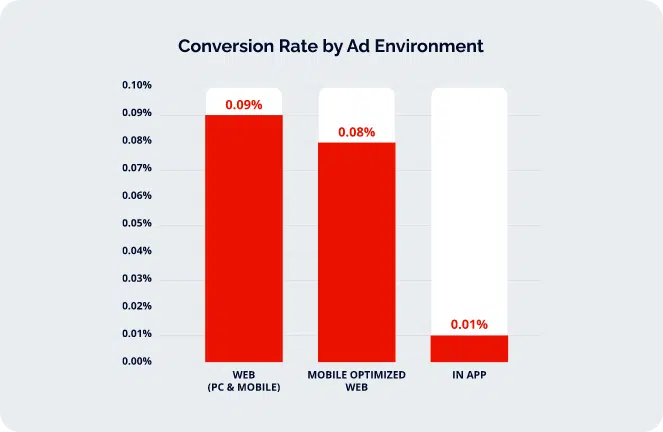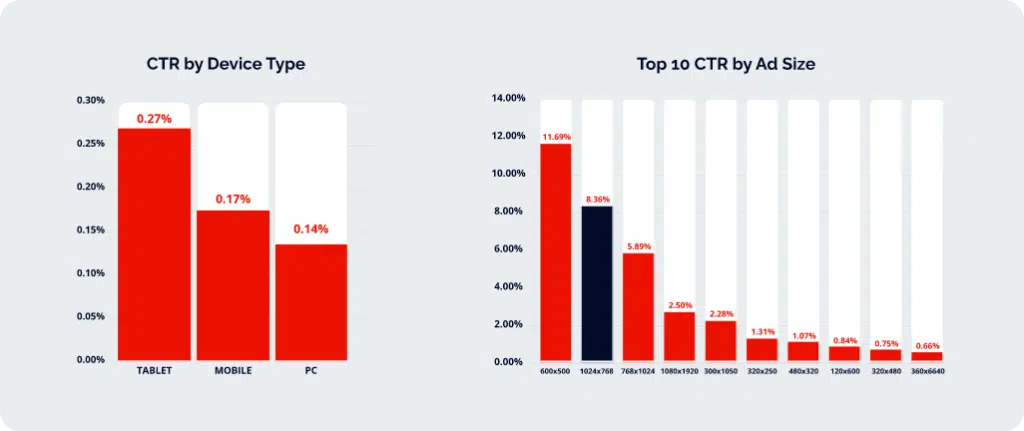Healthcare professionals (HCPs) lead multifaceted online lives, leaving an intricate HCP digital footprint as they consume content. In today’s healthcare market, the conversation centers around reaching HCPs in their professional lives, where they stay updated on the latest medical advancements, make decisions on patient care, purchase medical supplies, or connect with patients and colleagues.
However, HCPs spend more time on digital devices using their personal accounts and emails. Like other consumers, their time is occupied with staying up to date on the news, playing games, following sports, shopping, finding recipes, streaming content, and pursuing content for their other hobbies and interests. Understanding HCPs’ personal digital lives helps build authentic connections, foster trust, and deliver messages that resonate on a human level beyond their professional roles, thereby making marketing efforts more impactful and meaningful.
This article bases its insights on Adfire Health’s transactional data, which includes over 14.3 billion HCP engagements, conversions, and impressions, to explore how HCPs interact digitally. Knowing how they spend their time on mobile, PC, and tablet devices apart from their professional lives can help healthcare marketers stand out against the competition.
Article Breakdown
Adfire Health’s Transactional Digital Data
Adfire Health compiled data from January 2022 to September 2023 and obtained from Adfire Health’s demand-side platform (DSP). The research’s target population included 5.5 million HCPs across more than 660 specialty types and more than 100 license types in all 50 U.S. states and six territories. Over 14.3 billion impressions, engagements, and conversions were captured across desktop, mobile, and tablet devices. Further, 1,303,679 unique NPIs were captured from 634 classes of HCPs.
Digital Footprints are Connected with Email
A digital footprint encompasses the data and information resulting from an individual’s online activities, interactions, and presence on the internet. This array of data bridges the gap between an online and real-life existence. An email address is a vital link between an online identity and the real-life persona, acting as a central point for establishing profiles across various online services.
These services often rely on an email address for user identification, offering a convenient and relatively secure means of recognizing an online presence. Account profiles across the web display a physical appearance, often featuring a name and an email address. Service providers use that email address to communicate with an online identity and an individual. Companies then track online behavior, integrating this data into the users’ accounts.
HCPs Prefer News, Games, & More
By analyzing HCPs’ digital footprints, we can see they spend a significant amount of their time reading and engaging with lifestyle content, like all other consumers. From staying abreast of the news to playing games and using fitness apps, HCPs actively engage with content outside their professional lives.
Note: The following data on the type of content HCPs access spans mobile, desktop, tablet, and other devices.

Impressions Show What Lifestyle Content HCPs Read
An ad impression is when an ad is fetched and displayed on a user’s screen within a web page or mobile app. It signifies that the ad has been viewed or has the potential to be viewed by a website visitor or app user. When HCPs browse the web, they generate impressions by viewing or interacting with digital ads.
Programmatic advertising utilizes real-time HCP data for bidding on ad inventory, allowing marketers to analyze impressions across programmatic media. This analysis helps pinpoint the devices, digital channels, and platforms most frequently visited by HCPs (HCPs).
HCPs Read the News
HCPs spend approximately 65% of their time on websites and apps relating to news and information, including local and nationwide news publication websites like NPR, NBC News, Fox News, and USA Today. Search engine news aggregators such as Reddit News, Google News, and Yahoo News delivered significant impressions.
HCPs Play Games
HCPs spent 20.51% of their time on gaming websites and apps, including playing games such as Sudoku, Mahjong, Candy Crush, and Solitaire on various platforms.
Other Content HCPs Enjoy
HCPs also spend time scrolling through entertainment websites and apps related to fandoms and art and culture publications like Bored Panda. Content HCPs enjoy includes entertainment, fitness and exercise, food and cooking, travel and exploration, health and wellness, business and finance, technology, and home-related websites and apps are popular among HCPs. Some of the top websites per category include:
- Fitness & Exercise: Includes but is not limited to: menshealth.com, womenshealthmag.com, shape.com, muscleandfitness.com, and runnersworld.com.
- Food & Cooking: Includes but is not limited to: thespruceeats.com, foodnetwork.com, allrecipes.com, myrecipes.com, bonappetit.com, marthastewart.com, thepioneerwoman.com, tasteofhome.com, and simplyrecipes.com.
- Travel & Exploration: Includes but is not limited to: lonelyplanet.com, natgeotravel.com, travelandleisure.com, theplanetd.com, thepointsguy.com, adventuresoflilnicki.com
- Health & Wellness: Includes but is not limited to: myfitnesspal.com, health.usnews.com, webmd.com, activebeat.com, fitnessvolt.com, perfectketo.com, livestrong.com, mayoclinic.org, healthline.com, and shape.com.
- Business & Finance: Includes but is not limited to: finance.yahoo.com, www.businessinsider.com, fortune.com, marketwatch.com, money.usnews.com, inc.com, kiplinger.com, forbes.com, cnbc.com, and wsj.com.
- Technology: Includes but is not limited to: techradar.com, windowsreport.com, androidcentral.com, comicbook.com, cnet.com, and theverge.com.
- Home: Includes but is not limited to: hgtv.com, thekitchn.com, cookinglight.com, bhg.com, epicurious.com, realtor.com, apartmenttherapy.com, homedepot.com, and lowes.com.
HCPs View More Ads on Mobile Devices
HCPs viewed ads more on mobile devices (like Apple iPhones, Samsung Androids, and Google Pixels) than PCs or tablets. Mobile devices offer the flexibility and convenience to access content quickly, making it more likely for ads to be shown. Users across industries spend more time on mobile – recent data shows users spend an average of four hours and 48 minutes¹ on smartphones daily.
Impressions Show Us What Devices HCPs Use

Over 49% of impressions were delivered to mobile devices. Just like impressions show us what type of content HCPs frequent, they also show us what devices HCPs spend their time on. When HCPs browse the web, they generate impressions by viewing or interacting with digital ads on their devices. Marketers can track this information to understand how to maximize the performance of their content by device type.
HCPs Are on Mobile Devices Throughout The Day
Like the average consumer, HCPs wake up in the morning and check their cell phones to read the latest news, check sports scores, play games, order groceries, and more. In between patients or on the go, HCPs take breaks to play games, watch videos, and research services and products related to their interests, like traveling and fitness. In the evening and on weekends, users often access their phones for similar activities.
Mobile Ad Sizes HCPs Will See
Mobile ad sizes that perform include the medium rectangle ad (320×250 pixels) and mobile leaderboard ad (320×50 pixels). Strategizing and creating mobile-responsive web content with an excellent user experience is vital because HCPs spend most of their time-consuming content on mobile devices.
HCP Conversion Rates are Higher on PCs

Conversions rates are more than double on PCs (0.09%) than they are on mobile (0.04%) and 9x more than they are on tablets (0.01%). Typically, consumers learn about products and services on their smartphone or mobile device while engaging with lifestyle sites. When they’re ready to learn more or purchase, HCPs will go directly to the website on their desktop. PCs are used for more precise activities such as further research and following through with a purchase because it’s easier to search and fill out forms. For example, if they’re buying a stethoscope, they may have seen the ad on their phone and bought it later on their desktop.

Ads that catered to users on web browsers converted more than mobile-optimized web browsers and InApp ads. Conversions occur most for website-based ads because these can be featured across all three device categories (mobile, desktop, and tablet). Marketers will see more conversions on the web (PC & Mobile) compared to other ad environments primarily due to higher conversions on PC devices.
Note: HCPs only look at websites on PCs, whereas tablets and mobile devices can include website ads, mobile-optimized website ads, and InApp ads.
When HCPs Are on PCs
A doctor’s workday is divided by seeing patients and working at their desks to finish administrative tasks. One recent study showed physicians, for instance, spend 45% of their time during shifts on computers.² HCPs look at charts, communicate with patients, or log administrative work for patients’ medical records on their PCs using an independent software program approved by whichever healthcare system. In between patients, they may use their PC device to research medical information for patient care.
During their downtime between work tasks or at home, users primarily access desktops to watch videos, read the news, conduct medical research, or play online games.³ They also make more purchases on desktops and PCs for personal matters, including booking appointments, researching recipes, or exploring travel destinations.
Desktop Ad Sizes HCPs Will See
Popular ad sizes for desktop devices include the leaderboard ad (728×90 pixels), the half-page ad (300×600 pixels), and the portrait ad (300×1050 pixels) due to their larger size, high visibility, and adaptability to different formats. Not only do they easily capture attention, but they can also seamlessly integrate into the content to not overwhelm the reader or disrupt the user experience.
HCPs Generate Higher CTR on Tablets

With a 0.2% CTR, tablets have CTRs almost double that of mobile (0.17%) and PC (0.14%). This can be attributed to more engaging full-screen ad sizes and user behavior. As shown above, the 1024 x 768, an ad size shown only on tablets, drove the second highest CTR compared to other ad sizes. These full-page ads offer more content, contributing to higher CTS.
Additionally, HCPs use tablets in a more leisurely manner. Activities such as playing online games, watching TV shows or movies, reading ebooks, or casually browsing the web are more conducive to end-users interacting with and clicking on advertisements, even though their engagement may not translate into actual purchases.
When HCPs Are on Tablets
HCPs use tablets more so in their downtime at night or on the weekends when they’re not working. Scheduling ads during the early evening hours (e.g., 6-7 p.m. EST) on InApp platforms or mobile-optimized websites can increase the probability of healthcare workers engaging with your ad.
Tablet Ad Sizes HCPs Will See
Full-page tablet landscape interstitial ads (1024×768 pixels and 768×1024 pixels) and mobile-optimized half-page ads (300×600) are used for tablets. These full-page ads can drive increased CTR combined with tactful messaging and visually rich creatives. They’re best used for brand awareness and storytelling campaigns.
Using HCP Online Behavior to Influence Ad Strategy
Understanding how HCPs allocate their time across devices is pivotal in crafting effective marketing campaigns. By aligning marketing strategies with the device usage patterns of HCPs, we demonstrate respect for their time and preferences and increase the likelihood of establishing meaningful connections. Whether HCPs are at work, on the go, or at home, marketers must consider their preferences and habits to optimize and tailor ad content more effectively.
At Adfire Health, we work with healthcare marketers to create optimized, highly effective, data-based digital engagement strategies. With Thumbprint™, our segmented data ecosystem of over 8.2 million HCPs, we can offer direct access to HCPs nationwide.
We bring our years of hands-on experience to every new campaign and work with you to get the best results possible. Contact us to learn more about what we can do for your business.
Sources
- Kemp, S. (2022, May 4). Digital 2022: Time spent using connected tech continues to rise — DataReportal – Global Digital Insights. DataReportal – Global Digital Insights. https://datareportal.com/reports/digital-2022-time-spent-with-connected-tech
- Rapaport, L. (2017, January 30). Do doctors spend too much time with computers? U.S. https://www.reuters.com/article/us-health-physicians-time-use-idUSKBN15E2PN#
- Team, B. (2023, October 12). Mobile vs. desktop Internet Usage (Latest 2023 data). BroadbandSearch.net. https://www.broadbandsearch.net/blog/mobile-desktop-internet-usage-statistics
